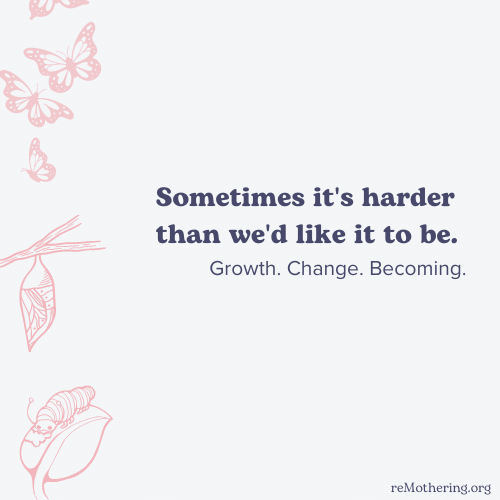Uncomfortable side effect of growth and healing
What happens when we see our outdated patterns with more clarity?
Growth takes courage. And while I’d love to say it’s all rainbows and flowers, the truth is, some legs of the healing journey can be hard. The “hard” comes in many forms, both internal and external.
In this article, we’ll look at one of the common scenarios: what happens when we realize we’ve been running outdated programming.

Thought-habits
First, let’s take a quick look at where the outdated programming comes from.
When we were young, we learned how to tie our shoes, how to read (if we were lucky), and we learned how we needed to show up in order to belong in our tribe.
Early on, many of us were taught how to tie our shoes with two-bunny ear loops; then, when we were ready, we learned a better way. But, for those of us that learned that belonging was earned by pretzeling ourselves into the person our caregivers needed us to be, we aren’t often taught that there’s a better way until we figure it out for ourselves.
What that means is, we can be walking around with thought-habits without even realizing they were learned. We can be bright and accomplished adults, and still be running child-like thoughts just under the radar of our awareness.
Child-like thoughts
Our child-like thoughts are often there FOR us. The problem with them is that they were solutions we came up with when we were much younger and had less agency than we do now as adults.
It’s a brain-thing. We have parts of our brain that don’t know linear time, and those cells and circuits may not know we are an adult now and that we have more resources available to us than we had as a young child. (see the neurobiology of “of-course-ness” to read more)
The good news is neuroplasticity is on our side, and there are many modalities for updating outdated programming – remothering is one of them. The tough news is, we may be walking around with child-like thoughts.
Here’s one of the child-like thoughts that I held onto until I was in my early FIFTIES (you read that right, I believed this until I was 51 years old)…
If I explain it to my mother clearly enough,
she will get me, I’ll feel loved by her,
and ….
Can you think of any child-like thoughts you may be holding onto? Here are some common ones:
- If I ___<fill in the blank>___ then, I’ll be worthy of love
- If ______ happens, then life will be smooth sailing
- I feel guilt, so I must not be as good of a daughter as I should be
What happens when we realize we’ve been running outdated programming?
How we react to those moments will depend on a number of different factors, but here are some common themes you may (or may not) experience.
Emotion Soup
Initially, we can be flooded with swirling thoughts and emotions. It may be hard to differentiate one from the next because they are all tangled up with one another.
Anger
When the clarity comes, it can be followed by the thought: “wtf, mom!?!!?!?!”. The anger may last longer than you would guess it might. For me, it took about 3-years for my anger to run its course. My anger, as it turns out, was protecting my hurt, but my hurt wasn’t yet ready to come forward to be witnessed. I had to earn the trust of my internal community first.
It doesn’t have to take 3- years, and hopefully having the reMothering roadmap & the reMothering Masterclass will shorten your journey, but there is a wisdom to how our healing unfolds. We don’t want to get stuck in anger, but we also don’t want to squash the messages and teachings it has for us.
As we are navigating anger, it is important that we learn healthy internal boundaries so we can separate what we think and feel from what we say and do. I’ll talk more about internal boundaries in coming articles, or you can check out one of my earlier articles about boundaries here.
Sadness
When we realize that our parent actually may not have the capacity to love us the way we’ve always wished they would, it can bring on the crocodile-sized tears. We may experience sadness, loneliness, self-questioning, relief, a combination of all of those, or something completely different.
Regret
This one’s likely gonna sting. Sometimes, the consequence of running an outdated pattern is that we have inadvertently impacted the people we love and care about most in this world. When that happens, it may seem counter-intuitive, but healing and forgiving ourselves is important. By doing our own work, we’ll have more capacity to move into accountability & healthy repair with our loved ones.
For more on that, check out Is self-forgiveness outrageously selfish?
Grief
We intuitively know how to grieve the tangible losses, for example, when a beloved pet passes. But when it comes to intangibles, like the grief for what never was, there’s often an instinct to minimize the experience. While each of our paths will be a little different, grief is an inevitable part of the healing journey. For more on grief, check out this playlist on YouTube: Grief and the Remothering Journey
The Remothering Moment
As we navigate the uncomfortable legs of our human journey, we can aim to ‘remember to remember’ to turn within for the nurturance, support, encouragement, and all of the other mother qualities we humans naturally seek. The remothering moments.